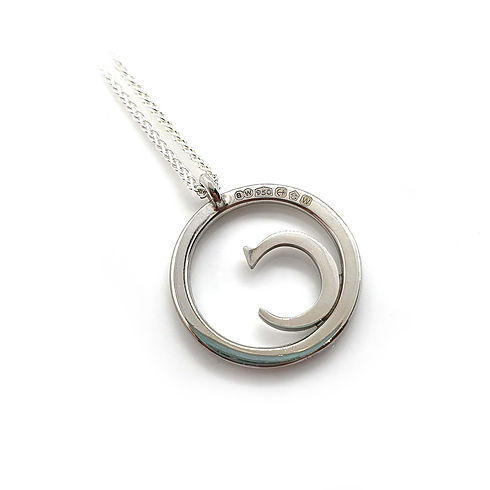

WHAT IS A HALLMARK?
Discretely inscribed on most pieces of my jewellery are a small collection of markings, called hallmarks.
Hallmarks are legal marks applied to items made in precious metal (silver, gold, platinum & palladium). Through a verification process, they prove the metals have been independently tested for purity, allowing you to buy with confidence in the quality you are receiving.
Hallmarks have a fascinating history linked to the long tradition of silverware and jewellery manufacturing in the UK.


WHEN DID HALLMARKING BEGIN?
Hallmarking began in 1300 when a law of Edward I instituted the assaying (testing) and marking of precious metals.
The aim of the process has remained the same: to protect the customer from imitations and to maintain a level playing field between makers.
When the first Assaying Hall was opened in London, makers were required to bring items to the Hall for marking – hence the term ‘hallmark’. Over the years extra marks have been added to distinguish who submitted the item and to show the date of marking.
WHAT DOES A HALLMARK MEAN?
A hallmark is a collection of symbols which are stamped or laser engraved onto items made in precious metal. It is applied to pieces made in silver, gold, platinum or palladium. A full hallmark is made up for the following symbols:
SPONSOR'S MARK
This indicates who submitted the item for hallmarking, and is unique to the registered individual or business. It’s often mistakenly called a ‘maker’s mark’; this is a confusion worth avoiding since you cannot assume any one piece was submitted by the maker. For example, companies can have multiple employees making jewellery, and so the jewellery will all bear the same company mark, even though pieces are made by different jewellers. My sponsor’s mark is ‘BW’ in a shield made from two circles.
ASSAY OFFICE MARK
This indicates where the item was hallmarked, not necessarily where the item was made. There are only four assay offices in the UK - Birmingham, Edinburgh, London, and Sheffield. I make my work in Cornwall but have it hallmarked in Birmingham.
DATE LETTER MARK
This tells you what year the item was marked. Date letters were introduced to the hallmark in 1478.





MILLESIMAL FINENESS MARK
This is what the hallmark is all about, and of prime concern to most shoppers. It indicates the precious metal content of the alloy expressed as parts per thousand. For example: ‘925’ indicates that an item is sterling silver — it is 925 parts fine silver and 75 parts other metal.
TRADITIONAL FINENESS MARK
A pictorial mark to indicate the type of metal. A lion for sterling silver, Britannia for Britannia silver, a crown for gold, an orb for platinum and the head of Athena for palladium.






ARE THERE ANY OTHER MARKS?
Special commemorative marks are occasionally issued occasionally to mark a major event in the life of the sovereign. So far these marks have been issued in the UK:
-
1935 Silver Jubilee
-
1953 Coronation Mark
-
1977 Silver Jubilee
-
2002 Golden Jubilee
-
2000 Millennium Mark
-
2012 Diamond Jubilee
-
2022 Platinum Jubilee
-
2023 Coronation Mark




